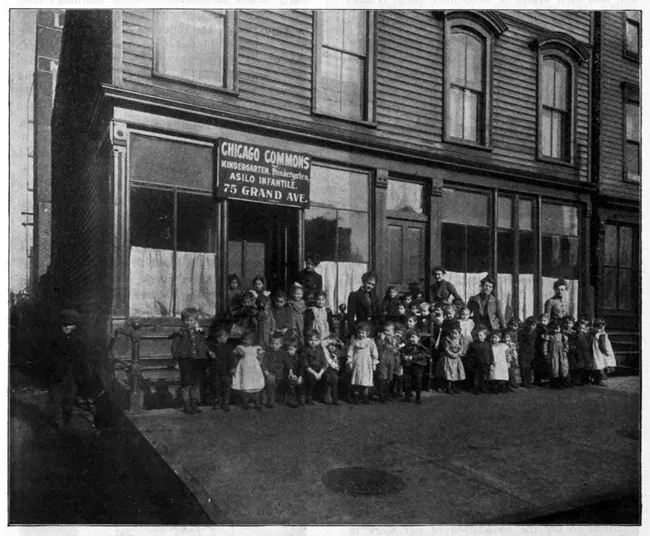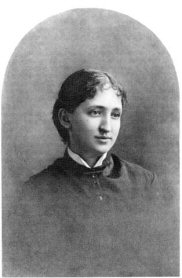2 The History of Social Work in the United States
“The focus for practice in a helping profession is faith in the possibilities within people, if given the right conditions for growth.”
– Social Worker Bertha Capen Reynolds (1885-1978)
A timeline of all the historical milestones
https://online.simmons.edu/blog/evolution-social-work-historical-milestones/
Progressive Movement and Social Reform
The inception of the social work profession in the United States can be traced back to the late nineteenth century beginning with charity work performed by local churches and communities hoping to meet the needs of the poor. Some of the earliest social work interventions were designed to meet basic human needs of populations and placed great value in providing support, assistance, and resources to families and communities to alleviate suffering (Nsonwu, Casey, Cook & Armendariz, 2013). This was the beginning of the progressive movement era. Many progressive-minded individuals began to speak out about social injustices during the rise of the industrial revolution. Many major cities wanted to attract business, so taxation was kept to a minimum. This left little or no money to provide social services for the poor. This lack of protections for the most vulnerable Americans caused progressives to criticize the lack of government intervention and involvement in social welfare (Flanagan, 2007).
Settlement House Movement
The settlement house movement called for a social reformation of America. The plight of the poor called many to the movement and ushered in the helping hands of early social workers (Flanagan, 2007). Stanton Coit founded the first settlement house, University Settlement, in New York City’s lower east side in 1886 after he toured settlement houses of England (Trolander, 1991). Jane Addams, an educated upper middle-class woman from Illinois, founded Hull-House in 1889 in Chicago. Hull-House was a successful settlement house located in an area that was largely populated by poor working immigrants. Residents of Hull-House were provided with multiple services including daycare and kindergarten for children, a library, art classes, adult literacy courses, music, and various other facilities (Paul, 2016). When Addams was a young woman, after she finished college, she traveled to London and visited Toynbee Hall settlement house. She was inspired to return home and start a similar organization where she could employ the same social services she observed at Toynbee Hall. Although Hull-House was not the first settlement house in America, it became the most well-known (Trolander, 1991). Jane Addams would go on to be an activist in the anti-child labor movement where she advocated for the rights of child workers. This activism would eventually assist in the passage of the Child Labor Law in 1916. In 1931 Addams would be awarded the Nobel Peace Prize for her continued commitment to social justice and reform (Paul, 2016).
For much more on the life and work of Jane Addams, see the video link at the beginning of this section. Final note as you look forward to more recent movements in social work and social justice, it was noted in a comment for the video that “Even though Addams was willing to offer Teddy’s (Theodore Roosevelt) nomination at the Progressives Convention, she was angry about his lack of inclusion of [people of color] …and consequently was a primary fundraiser for the founding of the NAACP.”

Courtesy of University of Illinois, https://digital.library.illinois.edu/items/f52b2130-1a05-0134-1d6d-0050569601ca-f
The First Professional
Mary Richmond was born in Illinois in 1861, but she was raised by her grandmother in Baltimore Maryland after her parents died at a young age. She was raised learning about social, political, and cultural issues of the time (Social Welfare History Project, 2011). After she graduated high school, she went to work as a bookkeeper for several years as she did not have the opportunity to attend college. She eventually applied for a position with the Charity Organization Society, (COS) in 1889. The Charity Organization Societies in several cities were the first organizations to develop a structured social work profession, providing social services to the poor, disabled, and needy. During the time Richmond was connected to the COS, she demonstrated her qualities as a leader, teacher, and practical theorist. Richmond’s ability to explain the mission and purpose of the organization as well as raise money to support the services that the organization provided, resulted in her being appointed as the first woman general secretary of the COS (Social Welfare History Project, 2011).
Mary Richmond’s lasting impact on the field of social work comes from her commitment to ensuring families receive appropriate services. Richmond sought to fully understand the problems of the poor and worked to train her staff to assist families in a structured manner. She felt that professionalization of social service would mean that poor families would receive better treatment and therefore improve their circumstances (Social Welfare History Project, 2011). One of Richmond’s biggest contributions to the social work profession was her book Social Diagnosis which was published in 1917. Richmond’s book focused on the practice of casework with individuals and was the first book to identify a systematic and methodological way to document and diagnose clients (Social Welfare History Project, 2011). Richmond states in her book, when people are sick, we can cure them; when they are bad, we can try to reform them but when they are out of work there is only one effective remedy for their troubles and that is real work at real wages. (Richmond, 1922, p. 208)

Courtesy of: https://historyofsocialwork.org/eng/details.php?cps=7&canon_id=133
The Great Depression
The practice and profession of social work was heavily involved in the Great Depression programs of the New Deal put forth by President Roosevelt (Leighninger, 2019). Mary Richmond’s model that included social reform as an essential part of social work was used by caseworkers in developing programs to assist families. Public works programs developed as part of the New Deal helped people in many ways. The earliest programs provided out of work individuals with a job and steady income (Leighninger, 2019).
Several professional social workers played vital roles in the development of New Deal programs to assist the American public during the Great Depression. Jane Hoey’s career as a social worker began in 1916 when she was appointed as the Assistant Secretary of the Board of Child Welfare in New York City. Hoey is best known for her role in the enactment of the Social Security Public Assistance Act which became law in 1935. Following the law’s enactment, Hoey became the Director of the Bureau of Public Assistance within the Social Security Administration and was responsible for organizing and implementing the distribution of the public welfare provisions (Social Welfare History Project, 2011).
Harry Hopkins became the Federal Relief Administrator during the Great Depression and presidential advisor. Hopkins believed that the way to assist people during a time of such job loss was to get people back to work instead of direct government handouts. Hopkins led such New Deal programs as the Federal Emergency Relief Administration (FERA), the Civil Works Administration (CWA), and the Works Progress Administration (WPA) (Hopkins, 2011). These programs not only helped to create work and income for struggling families, but they also helped with morale which Hopkins and other social workers of the time deemed necessary (Leighninger, 2019).
https://www.youtube.com/watch?v=a4VzRSnksmA
Legacies of Social Change from CSWE and NASW on Youtube.
References
The evolution of Social Work: Historical milestones. SC-UMT. (2021, May 13). Retrieved April 17, 2022, from https://online.simmons.edu/blog/evolution-social-work-historical-milestones/
Hansan, J.E. (2013). Hunter, (Wiles) Robert (April 10, 1874 – May 15, 1942), social worker, author and socialist. In Social Welfare History Project. Retrieved from http://socialwelfare.library.vcu.edu/people/hunter-robert/
Leighninger, R. (2019). Families, The Family, and the New Deal. Families in Society: The Journal of Contemporary Social Services. 100(4) 341–350. https://doi.org/10.1177/1044389419874904
Nsonwu, M. B., Casey, K., Cook, S. W., & Armendariz, N. B. (2013). Embodying social work as a profession: A pedagogy for practice. SAGE Open, 3(3), 1-8. https://doi.org/10.1177/2158244013503835
Paul, C.A. (2016). Jane Addams (1860-1935). Social Welfare History Project. Retrieved from http://socialwelfare.library.vcu.edu/settlement-houses/addams-jane/
Richmond, M. E. (1917). Social diagnosis. New York: Russell Sage Foundation
Social Welfare History Project (2011). Mary Ellen Richmond (1861-1928) – Social work pioneer, administrator, researcher, and author. Social Welfare History Project. Retrieved from http://socialwelfare.library.vcu.edu/social-work/richmond-mary/
Trolander, J.A. (1991). Hull-House and the settlement house movement: A centennial reassessment. Journal of Urban History, 17(4), 410-420. https://journals.sagepub.com/doi/pdf/10.1177/009614429101700404

